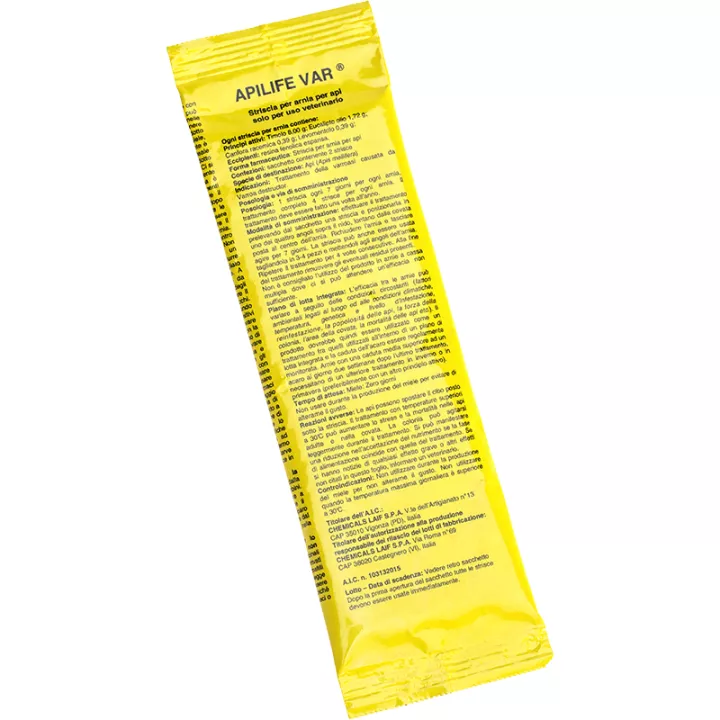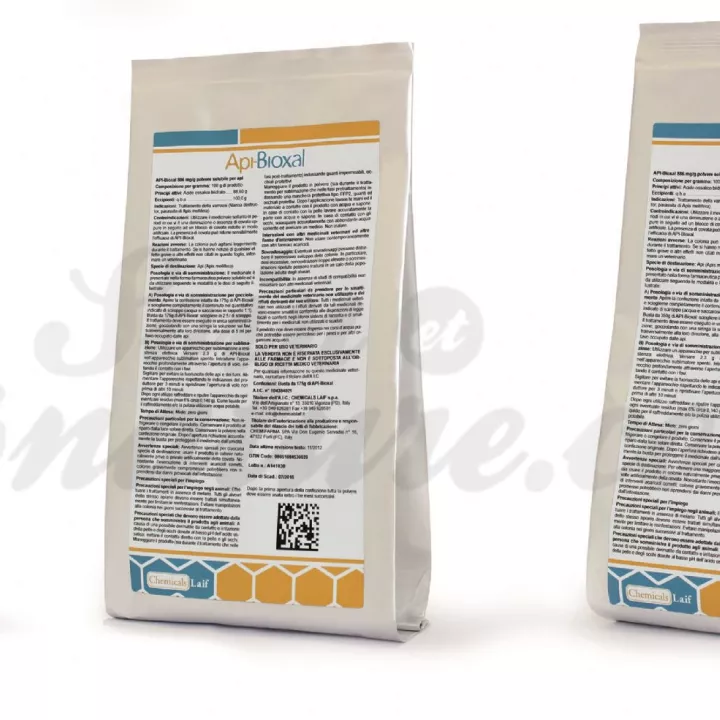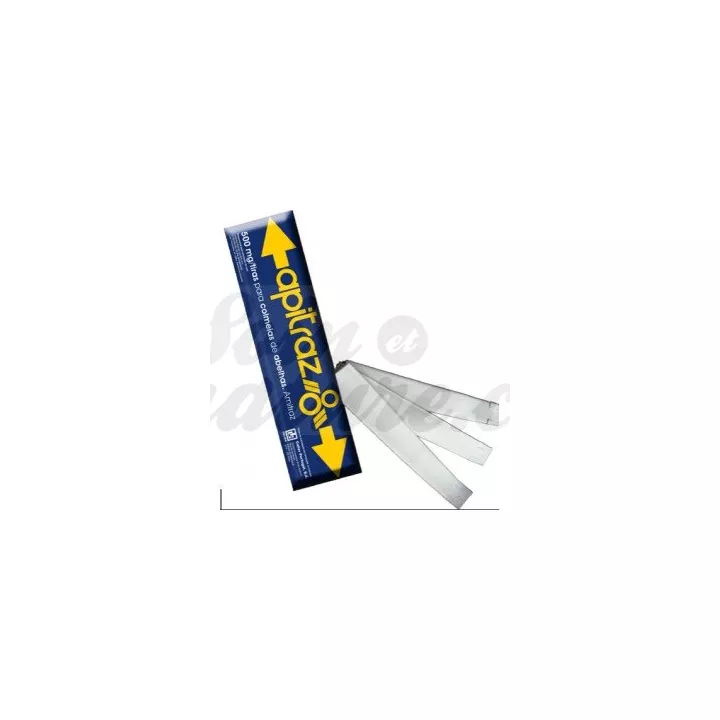What is Apitraz used for? 10 x 30 cm strips for 5 Dadant hives.
Treatment of external parasitic diseases caused by Varroa destructor sensitive to amitraz. APITRAZ 500 mg Amitraz per strip, apply 2 strips per hive after the last harvest for 8 to 10 weeks to combat varroasis in bees.
Beekeeping is a valuable activity that contributes to the pollination of many crops and the production of quality honey. However, bees, these incredible workers, face formidable enemies, one of the most fearsome of which is Varroa destructor, a parasitic mite responsible for major losses in bee colonies. To combat this scourge effectively, beekeepers have a choice ally at their disposal: Apitraz.
Varroa destructor is a parasitic mite that attacks bees, weakening colonies and sometimes causing them to collapse. Originating in Asia, this parasite has become a worldwide problem for Apis mellifera bees, including European honeybees. Varroasis, the disease caused by Varroa destructor, can cause considerable economic damage and affects bee survival.
Apitraz is a strip designed to combat varroasis in bees. Each strip contains 500 mg of amitraz, a synthetic substance from the amidine family, recognized for its acaricidal and insecticidal activity. The mode of action of amitraz is neurotoxic, meaning that it targets the nervous system of parasites, in this case Varroa destructor.
Amitraz, the active ingredient in Apitraz, acts as an inhibitor of octopaminergic receptors. This neurological action inhibits normal nerve impulses in the Varroa destructor, causing paralysis. Once paralysed, Varroa destructor bees are unable to move or feed, leading to their natural elimination by gravity alone. This method of targeted action makes it possible to combat varroasis effectively without harming the bees themselves.
Protecting bees is essential to preserving our environment and our food chain. By choosing Apitraz as their varroasis control solution, beekeepers contribute to the health of their bee colonies and the long-term survival of their hives. Using Apitraz is a reliable and proven way to protect bees while supporting the pollination of our crops.
We also offer Apivar strips at the best price in our online pharmacy.
How to use these strips
Use two strips per hive (i.e. 1 g of amitraz per hive), and hang them between the frames at the level of the cluster of bees. Place the strips between the frames where the bees are most mobile. Hang the strips in such a way as to give the bees free access to both sides, while maintaining a minimum space for the bees.
- Treat all the hives in the apiary at the same time to prevent the risk of robbing.
- Do not reuse strips.
- It is recommended not to treat during honeyflow, but after the honey has been harvested. See also "Dosage and administration".
- Inappropriate use of the product could lead to an increased risk of resistance development and ultimately to ineffective treatment.
- The level of varroa infestation in bee colonies should be monitored regularly during treatment and also in the period following.
- The product should be used as part of an integrated varroa control program.
- Resistance to amitraz has been reported in some Varroa populations.
- In countries where resistance to amitraz is recognized, or where resistance to amitraz is suspected, use of the product should ideally be based on the results of sensitivity tests (e.g. Beltsville test). For further information, consult your veterinarian or local apiary inspector.
Give your opinion on the use and dosage of APITRAZ sachet of 10 strips 30 cm for 5 Dadant hives with our partner Verified opinions after your purchase.
Precautions for use
- Do not exceed or reduce the recommended dose and duration of use.
- Remove strips at end of treatment.
What is it made of?
White rectangular plastic strap with two fasteners and fold mark.
- Poly(ethylene vinyl acetate)
- Styrene-butadiene copolymer
- Liquid kerosene
- Calcium magnesium carbonate
- Pentaerythrityl tetrakis [3-(3,5-di-tert-butyl-4-hydroxyphenyl)propionate
- Didodecyl 3,3′-thiodipropanoate
- Erucamide
- 50% siloxane polymer dispersion
Presentation:
Apitraz Sachet of 10 strips 30cm comes in a sachet of 10 strips (300 mm X 40 mm).









